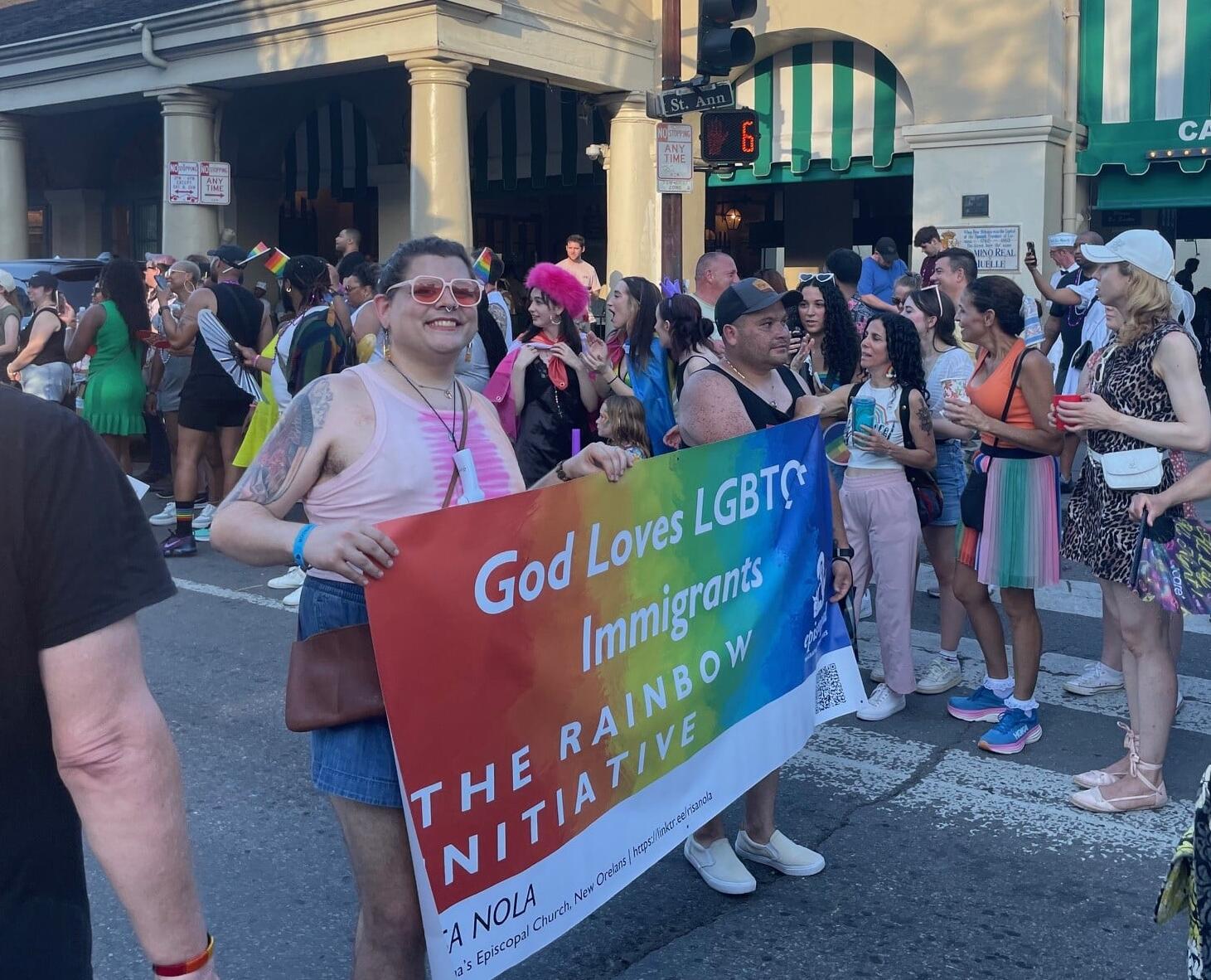 In New Orleans, Louisiana, a group of people have been providing support for LGBTQ+ asylum seekers as they build new lives for themselves. This group, known as RISA-NOLA, has been doing this work since fall 2023, inspired by Episcopal Migration Ministries’ Rainbow Initiative.
In New Orleans, Louisiana, a group of people have been providing support for LGBTQ+ asylum seekers as they build new lives for themselves. This group, known as RISA-NOLA, has been doing this work since fall 2023, inspired by Episcopal Migration Ministries’ Rainbow Initiative.
The Rainbow Initiative is EMM’s response to a resolution passed at the General Convention of the Episcopal Church in 2022. Resolution D045 “On Supporting LGBTIQ+ Refugees and Asylum Seekers” called for the Church to support people who have fled their countries because of persecution based on sexual orientation, gender identity, gender expression, and/or sex characteristics. It also directed EMM to focus attention on people subject to such persecution and to offer information on how they could be better supported.
As a result, EMM launched the Rainbow Initiative (RI) in January 2023. An essential thrust of RI has been developing a network of congregations and communities (RICs) committed to supporting LGBTQ+ forced migrants in their cities and regions. One such RIC is “RISA-NOLA,” an acronym that stands for Rainbow Initiative at St. Anna’s Episcopal Church, in New Orleans, Louisiana.
Join us as we explore in this multi-part series the story of RISA-NOLA, its roots in an Episcopal congregation and surrounding communities, and its efforts to offer genuine welcome to LGBTQ+ asylum seekers looking for a new home.
Part 1: NOLA Grown
While part of a broader movement, RISA-NOLA has grown 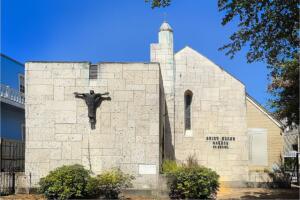 out of the unique humus that its congregation, neighborhood, city, and state provide.
out of the unique humus that its congregation, neighborhood, city, and state provide.
St. Anna’s Episcopal Church is located on Esplanade Avenue, in the Tremé neighborhood of New Orleans. This neighborhood has significantly lower life-expectancy rates, lower levels of educational attainment, and higher numbers of single-parent households than Orleans Parish as a whole. (photo credit: Ellis Anderson)
Founded in 1846, the congregation has long embraced the rituals of Anglo-Catholicism (for example, placing a heightened emphasis on the sacraments, use of ornamentation in liturgical worship, and a deep commitment to care of the most vulnerable populations). The church’s website shares more details about its history, dating the congregation’s preference for Anglo-Catholicism to the late 1870s, its racial integration to the 1950s, and its support for gay rights to the early 2000s. Over the past few decades, St. Anna’s has come to be known as a diverse congregation with a remarkably high percentage of openly LGBTQ+ members: around 50%, according to a parish profile created in 2023.

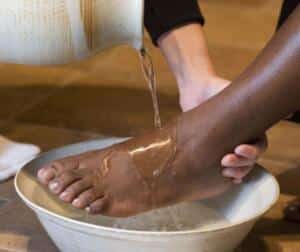

Reflecting both Anglo-Catholicism and New Orleans’ culture of parades and public celebrations, St. Anna’s has a tradition of processing through the streets of Tremé to celebrate Palm Sunday (above). In its desire to be inclusive of all, the congregation also arranges for pedi-cabs (a New Orleans fixture) to transport parishioners who cannot walk the distance covered by the procession.
The artwork below, the “Luke 14 Mural” created by artist Hyatt Moore, conveys a vision of radical inclusion. Posted on St. Anna’s Facebook page in April 2022, it reflects the congregation’s commitment to welcoming all, regardless of ability, age, race, ethnicity, nationality, gender, sexual orientation, or other potential differences.
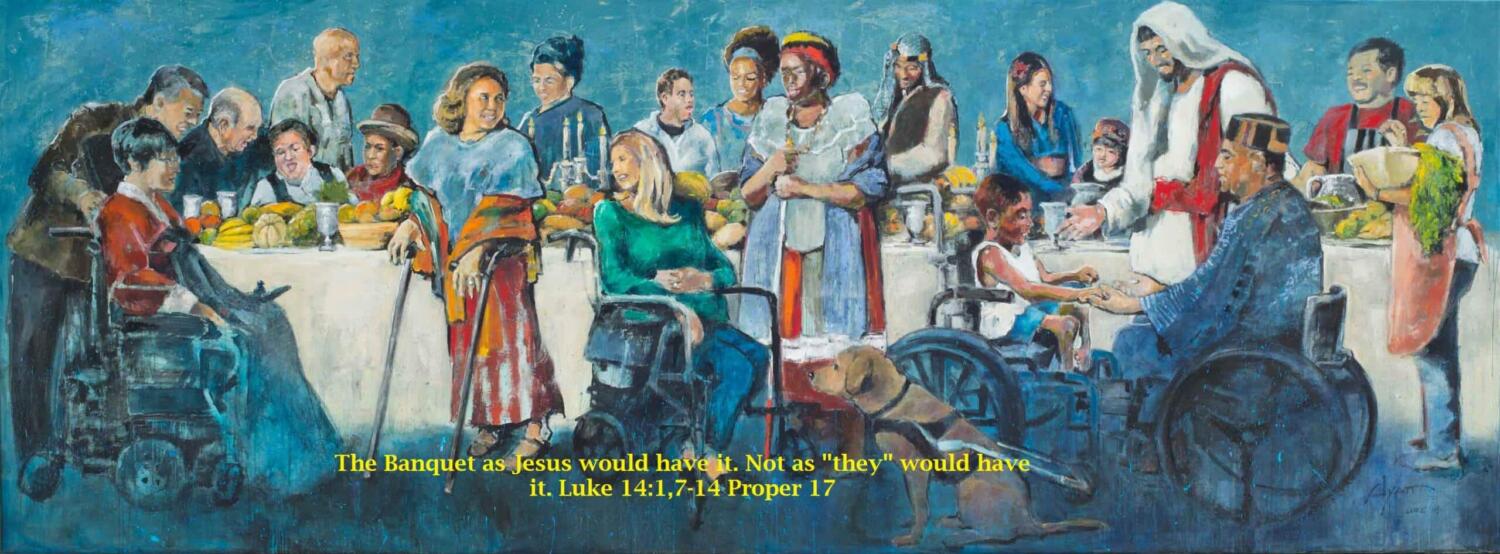
St. Anna’s is also known for its deep commitment to serving people within and beyond the church. For many years, the parish has provided food to neighbors in need, most recently through a food pantry that supports about 40 households a month. Thanks to its location on Esplanade Avenue which runs along a ridge, St. Anna’s property was relatively unaffected by the massive flooding and destruction that came to the city with Hurricane Katrina in 2005. The congregation quickly opened its doors to community organizations and neighbors in need, including local musicians who had lost access to performance venues. For several years following Katrina, a midweek evening program featuring local musicians and a simple dinner brought diverse people to the church while supporting musicians.
In 2009, the church helped to launch a program of wraparound services for children at risk, now known as “Anna’s Place NOLA.” Devoting a significant part of its annual budget to Anna’s Place, the congregation has recently renovated and dedicated a nearby home, Dodwell House, to house the program and serve as a resource for other neighborhood programs.
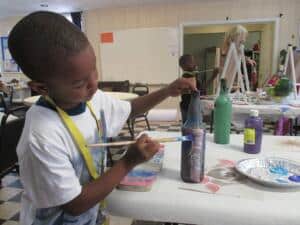
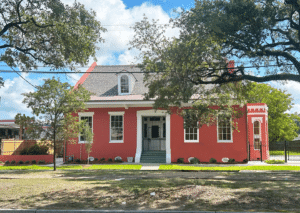
St. Anna’s is committed to affirming LGBTQ+ people, thanks to the leadership of both clergy and lay people in welcoming all and developing relationships with likeminded organizations in the area. Deacon Luigi Mandile, who still serves at St. Anna’s, and Father Bill Terry, rector from 2003 to 2023, for years made a point of visiting nearby gay bars, wearing their clerical collars, to bring the word of God’s love for all people to many who were justifiably leery of organized religion. In time, their outreach not only brought individuals to St. Anna’s, but also inspired generous donations from bars, social clubs, and the organizers of LGBTQ+ carnival balls to the congregation’s social outreach projects, including the food pantry, collections of Christmas gifts for children in need, and the Anna’s Place program. As St. Anna’s history shows, a congregation that affirms and welcomes the gifts of all people, regardless of gender, sexual orientation, race, socioeconomic status, physical mobility, age, or other differences, is one that inspires generosity and commitment to serving many, diverse neighbors.
Stay tuned for the next installment in this series. (To learn more about St. Anna’s and its role in the wider community, we recommend Bethany Ewald Bultman’s portrait of the church from August 2023.)
Read Part 2 of this series here.

